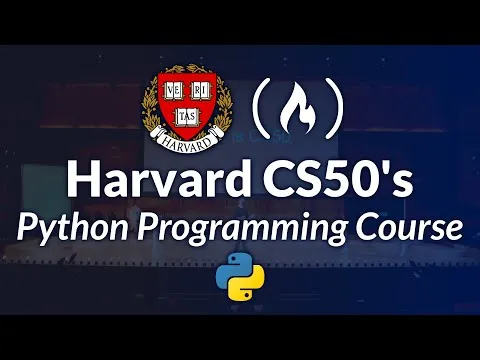
Eclipse Tutorial For Beginners : Learn Java IDE in 10 Steps 
This tutorial provides a comprehensive guide to learning the Java IDE, Eclipse, in 10 easy steps. Get started today and become more productive. ▼
ADVERTISEMENT
Course Feature
![]() Cost:
Cost:
Free
![]() Provider:
Provider:
Udemy
![]() Certificate:
Certificate:
No Information
![]() Language:
Language:
English
![]() Start Date:
Start Date:
Self Paced
Course Overview
❗The content presented here is sourced directly from Udemy platform. For comprehensive course details, including enrollment information, simply click on the 'Go to class' link on our website.
Updated in [April 29th, 2023]
This course provides an overview of the Eclipse Integrated Development Environment (IDE). It is designed to help beginners learn the fundamentals of Eclipse, including Views, Perspectives, Shortcuts, Code Generation, and Plugins. Through this course, students will gain an understanding of how to use Eclipse to their advantage. They will learn how to save actions and characteristics, as well as how to use the IDE to be more productive. By the end of the course, students will have a better understanding of how to use Eclipse to their advantage.
[Applications]
After completing this course, learners can apply their knowledge of Eclipse to their own projects. They can use the Views, Perspectives, Shortcuts, Code Generation, and Plugins to their advantage. Learners can also save their actions and characteristics for future use. Additionally, learners can use Eclipse to increase their productivity and become more efficient in their programming.
[Career Paths]
1. Software Developer: Software developers use Eclipse to create, debug, and maintain software applications. They use the Eclipse IDE to write, compile, and debug code, as well as to create and manage projects. Software developers must be knowledgeable in a variety of programming languages, such as Java, C++, and Python. With the increasing demand for software development, software developers are in high demand and the job outlook is expected to grow significantly in the coming years.
2. Web Developer: Web developers use Eclipse to create and maintain websites. They use the Eclipse IDE to write, compile, and debug code, as well as to create and manage projects. Web developers must be knowledgeable in a variety of programming languages, such as HTML, CSS, and JavaScript. With the increasing demand for web development, web developers are in high demand and the job outlook is expected to grow significantly in the coming years.
3. Database Administrator: Database administrators use Eclipse to create, maintain, and optimize databases. They use the Eclipse IDE to write, compile, and debug code, as well as to create and manage projects. Database administrators must be knowledgeable in a variety of database technologies, such as Oracle, MySQL, and SQL Server. With the increasing demand for database administration, database administrators are in high demand and the job outlook is expected to grow significantly in the coming years.
4. Mobile Application Developer: Mobile application developers use Eclipse to create, debug, and maintain mobile applications. They use the Eclipse IDE to write, compile, and debug code, as well as to create and manage projects. Mobile application developers must be knowledgeable in a variety of programming languages, such as Java, Objective-C, and Swift. With the increasing demand for mobile applications, mobile application developers are in high demand and the job outlook is expected to grow significantly in the coming years.
[Education Paths]
1. Bachelor of Science in Computer Science: This degree path provides students with a comprehensive understanding of computer science fundamentals, including programming, software engineering, and computer architecture. Students will also learn about the latest trends in technology, such as artificial intelligence, machine learning, and cloud computing. Additionally, students will gain the skills necessary to develop and maintain software applications.
2. Bachelor of Science in Information Technology: This degree path focuses on the application of technology to solve business problems. Students will learn about the design, development, and implementation of information systems, as well as the management of data and networks. Additionally, students will gain the skills necessary to develop and maintain software applications.
3. Master of Science in Computer Science: This degree path provides students with an advanced understanding of computer science fundamentals, including programming, software engineering, and computer architecture. Students will also learn about the latest trends in technology, such as artificial intelligence, machine learning, and cloud computing. Additionally, students will gain the skills necessary to develop and maintain software applications.
4. Master of Science in Information Technology: This degree path focuses on the application of technology to solve business problems. Students will learn about the design, development, and implementation of information systems, as well as the management of data and networks. Additionally, students will gain the skills necessary to develop and maintain software applications. This degree path is becoming increasingly popular as businesses become more reliant on technology for their operations.
Pros & Cons

Detailed explanation of eclipse.

Useful tips, shortcuts, and instructions.

Easy to understand manner.

Directly help in day to day work.

Poor voice quality.

No explanation of setup env for jdk, maven.

Vague words used.

No basics of Java knowledge.
Course Provider

Provider Udemy's Stats at AZClass
Discussion and Reviews
0.0 (Based on 0 reviews)
Explore Similar Online Courses

C++ Programming: Basic Skills

Django ORM Course

RDBMS PostgreSQL

Intro To PostgreSQL Databases With PgAdmin For Beginners

PostgreSQL: Client Applications

Mastering SQL using Postgresql

Database Design and Basic SQL in PostgreSQL

PostgreSQL: Advanced Queries

Spatial SQL with Postgres : A language for geographers

Learn SQL Using PostgreSQL: From Zero to Hero

PostgreSQL Essential Training


Start your review of Eclipse Tutorial For Beginners : Learn Java IDE in 10 Steps